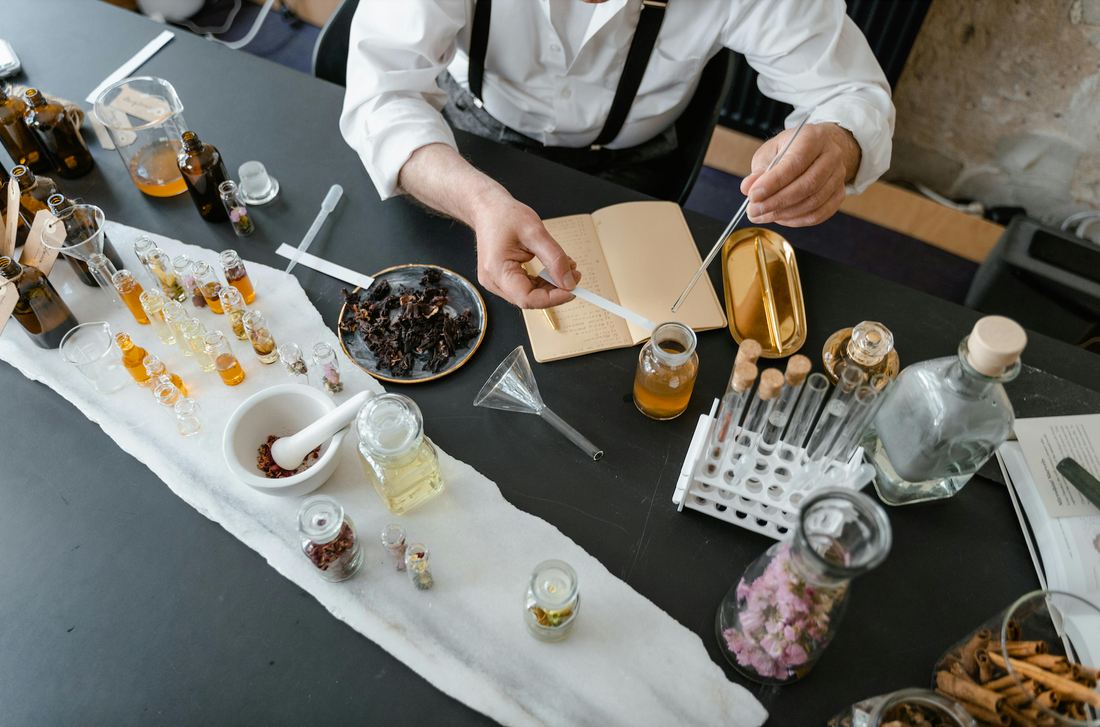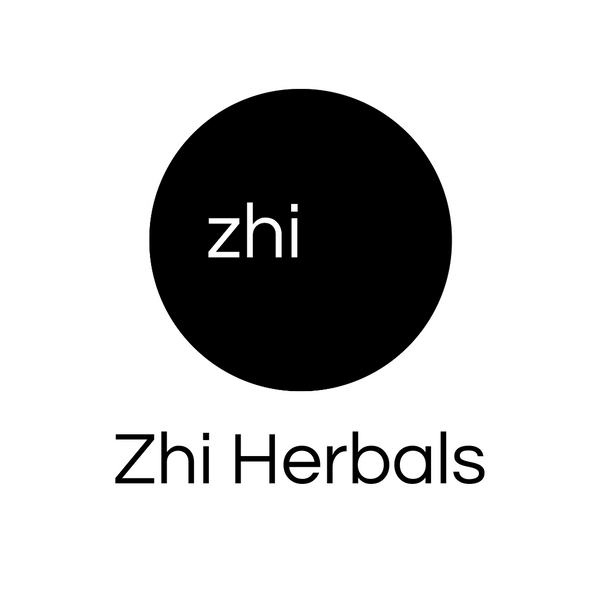
How to Make a Tincture
Share
Herbal Tincture Making
Herbal tinctures can be made from any type of alcohol, although we usually suggest using vodka or another high proof spirit, as this helps the herbs to extract into the alcohol. Vodka is also clear and tasteless, but you can use alcohols with flavour if you want to. Check out our article on the best types of alcohol for tincture making for more information on the best herbal flavour combinations and which alcohols are best to use.
A Basic Herbal Tincture Recipe
Tinctures are usually made with 1:3 or 1:5 ratios between the herbal material and the alcohol solution. A 1:5 tincture will need one part herb or mushroom material for every five parts of alcohol, while a 1:3 tincture is more concentrated, at one part medicinal material for each three parts of alcohol.
This easy recipe will make you a 1:3 tincture. Technically, this is called the “folkloric” method because it uses more approximate measurements and less equipment:
You Will Need The Following Items To Make A Tincture:
- Vodka
- Herbs to infuse
- Glass Jar
- Cheesecloth
- Glass Dropper Bottle (to store your finished tincture)
To make your tincture:
- Ensure that your glass jar is clean and dry. If you use metal lids, ensure there is no rust anywhere that may come into contact with the tincture, as it will leach and contaminate your remedy.
- Fill your jar 1/3 full with herbs, and the remainder with vodka or another alcohol of your choice. Regardless of which alcohol you choose, it must completely submerge the herbal material.
- Seal and allow herbs to extract for 2-3 weeks. Add more alcohol if you notice that particularly dry herbs have absorbed it and expanded, because exposure to the air can lead to the herb going rotten or rancid.
- Regardless of what herb or mushroom you’re using, or the alcohol percentage you need, it’s best to shake your tincture every day. Shaking keeps the plant or fungi material evenly spread out so the alcohol can draw out the medicinal substances. This employs the process of diffusion, where a substance will always move from an area of high concentration to low concentration, eventually producing an even distribution.
- Afterwards, strain using cheesecloth, and store in a labelled glass dropper bottle for use. An optional step you can take is to pour the herbal material back into the tincture and let it set for another night or two, before straining it out again.
Depending on the herbs that you use to make your tincture, you may be able to use them for another purpose once they have been strained. For example, if you’re making a nettle leaf tincture, you can save the finished nettles and add them to a nettle and potato soup, or mix them with eggs in a healthy omelette. Don’t be afraid to be creative with it!
The Weight-To-Volume Method
If you need to ensure a specific dosage every time, or are practicing to make herbal tinctures professionally, the weight-to-volume method is best. This method requires kitchen scales and measuring glasses to get the right amount of ingredients, so add them to the above method.
Like the folkloric method, use higher concentrations of herb when there is more water content. Very dry material can make an effective tincture at a ratio of one ounce to five ounces (by volume) of alcohol. Fresher material will need one ounce to every two or three ounces of alcohol.
Herbal Remedies To Try Out
Tinctures supply herbal remedies in a more concentrated, longer-lasting form than brewed teas or foods. If it’s your first time making tinctures, consider herbal remedies made from aerial parts (flowers, seeds, dried fruits, or leaves). These include:
Lavender
Chamomile
Peppermint or Spearmint
Echinacea
Calendula
Elderflower
Passionflower
Fennel Seed
Anise Seed
We suggest only preparing single-remedy tinctures, not combination formulas. Some phytochemicals may bind to and inactivate each other, such as tannins and alkaloids, while others may have different requirements when it comes to alcohol concentration or preparation time. If you want to mix multiple remedies together, do this with separate tinctures and store it in another bottle.
Medicinal Mushrooms
Yes, you can make tinctures from medicinal mushrooms too! We offer a wide range of dried medicinal mushrooms that you can tincture. This section is for you!
Medicinal mushrooms, including reishi, lion’s mane, and cordyceps, have a range of deep, tonifying effects including immune-boosting, anti-inflammatory, and anti-aging properties.
Immune-boosting medicinal mushrooms are often made into tinctures by dual extraction. This helps you extract both the water-soluble and fat-soluble components. In a dual extraction, it’s often best to use half your material for the water extract and half for the alcohol extract.
Dual extractions for tough remedies such as mushrooms involve sitting finely chopped, dried material in high-proof alcohol for two to six weeks. Some recipes advise blending the chopped herb or mushroom with your alcohol. Don’t worry about it floating, as the raw material will sink a little and be covered enough to prevent rancidity. It’s also okay to add a small amount of glycerine to keep the mixture more evenly spread out.
The water component of your tincture can be prepared as a decoction. Most herbalists recommend simmering the decoction for anywhere between two hours to several days. When you combine the alcohol and water extractions, ensure that the total alcohol content is around 25%. Not only does this percentage prevent rancidity, it also isn’t so high that the unique, beneficial carbohydrates in reishi and other mushrooms become damaged.
Other Herbs That May Benefit From Dual Extraction
Besides medicinal mushrooms, dual extraction can be a good choice for certain herbs high in water-soluble substances. For example, marshmallow root is high in soothing mucilage which coats the digestive tract lining, but its solubility in water and incompatibility with alcohol means you will need a water or dual extraction.
Storage And Labelling
When choosing glass bottles for storage, ensure that they are either amber or designed to keep out ultraviolet light. Regardless of which type of dark glass you choose, always keep your tinctures in cool, dark places in order to avoid light and heat degrading them. This is especially important if you live in a hot climate.
A tincture that is stored correctly can last you for at least two years, so don’t worry if you expect to only need it occasionally. Some say that high-alcohol preparations with antimicrobial properties from the herbal material can last indefinitely, although this has not been fully tested. If a tincture looks or smells bad or rancid – don’t use it!

1 comment
Very informative article, thank you!
I’m just learning to tincture herbs, so I found the article quite useful regarding the rudiments of Timcturing.